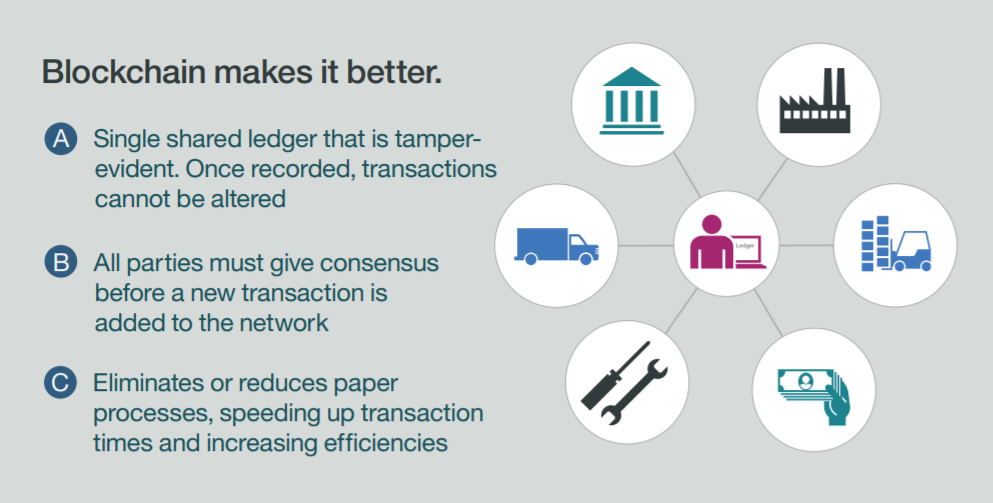Blockchain technology is the operative system that runs the cryptocurrency known as Bitcoin. Recent technological advancement has applied this technology to other areas of business that particularly pertain to arts organizations.
Blockchain has the potential to create a bright future for these institutions. It opens the doors for new ways to manage assets, collect information and manage an organization’s internal data. It can also create smart contracts and track transactions of objects. This technology connects institutions to both individuals and other institutions in a completely new way.
The Basics
Blockchain is a database that manages informational transactions while keeping a record of the operations in real time, which is similar to peer to peer transactions. It is also possible to embed code, create permissions, and control access to information. This changes how an arts organization can control, share, and exchange data, creating better access to these crucial tools.
In a business context, blockchain can create an information hub. According to an article in Harvard Business Review, written by Iansity and Lakhani, blockchain can be used “internally as a database for applications like managing physical and digital assets, recording internal transactions, and verifying identities.”[1] Thus enabling database management to safely share information at a faster rate.
Smart Contracts
Smart contracts are also useful options when working with blockchain. Harvard Business Review defines them as “the most transformative blockchain application at the moment. These automate payments and the transfer of currency or other assets as negotiated conditions are met.” [2]
Using smart contracts in the art industry not only allows transactions between two individuals, but they also identify each customer, enabling ticket sellers and institutions to avoid bots. Companies can also perform transactions of goods or monies without the need of a middleman. Right now, organizations like the Red Cross and Greenpeace are receiving donations on cryptocurrency with no charge through digital currency payment processors like Coinbase.
IBM block chain infographic. Source: https://www-01.ibm.com/common/ssi/cgi-bin/ssialias?htmlfid=XI912346USEN&
Transactional Data
In addition, blockchain allows organizations to manage their digital collections as a ledger where all transactions are embedded. The Getty Museum has a similar system called the Digital Object Repository (DOR) that works on principles related to blockchain. The DOR is decentralized and it allows organizations to manage access to the program. It runs on Hyper Text Transfer Protocol (HTTP), which has the potential to integrate with blockchain. This partnership would allow the DOR to enhance its ability to manage transactions by maximizing the data collection of each transaction.
An article at The Guardian points out an additional use for blockchain’s capability of recording transactions. "This is especially useful for museums who could store their artifact catalog with blockchain privately, but provide different levels of access to staff, researchers, and the public." [3]
The Future
Different arts organizations have started adopting a model that relies on blockchain. For example, Ujo Music is a platform that helps artists release albums while maintaining their control over their music and identities. Through blockchain, they handle licensing and payments, consolidating metadata about rights, and backing up data for all of the artist’s works. Another approach is a digital currency called Kapu. Its creator, Martino Merola, aims to “revolutionize how archaeological and heritage data are stored, preserved, and made accessible.” By creating an exchangeable cryptocurrency that will create an archaeological network over blockchain, Kapu aims, “to make immutable the human history through the creation of the first world archaeological blockchain of the modern era and also aims to enhance it thanks to today’s technology.” [4]
Don Tapscott, who is an advocate for digital implementation stated, "Block Chain technology of cryptocurrencies is a core part of the next generation of the internet that is radically going to transform not just commerce and the nature of the corporation, but many of our institutions in society and everyone needs to pay attention to this.” [5]
Blockchain might seem like future technology, however it is also a foundation technology, meaning that it could change how all organizations interact on a basic level. Applications and programs that use blockchain as a core technology can provide a better understanding of an organization’s customers, control their ticket sales, and manage internal information. What potential do you see in this budding technology?
[1]Marco Iansiti and Karim Lakhani, "The Truth About Blockchain," Harvard Business Review, January -February (2017): 118-127, accessed September 26, 2017, https://hbr.org/2017/01/the-truth-about-blockchain.
[2] Ibid
[3] Peter Campbell, "Archaeology and blockchain: a social science data revolution?" The Guardian, October 2, 2017, accessed October 2, 2017, https://www.theguardian.com/science/2017/oct/02/archaeology-and-blockchain-a-social-science-data-revolution.
[4] Isola Giorgio, "The KAPU project," KAPU, accessed October 15, 2017, https://www.kapu.one/.
[5] Kariappa Bheemaiah, "Block Chain 2.0: The Renaissance of Money," Wired, accessed September 26, 2017, https://www.wired.com/insights/2015/01/block-chain-2-0/.
Sources
Bheemaiah, Kariappa. "Block Chain 2.0: The Renaissance of Money." Wired. Accessed September 26, 2017. https://www.wired.com/insights/2015/01/block-chain-2-0/.
Campbell, Peter. "Archaeology and blockchain: a social science data revolution?" The Guardian. October 2, 2017. Accessed October 2, 2017. https://www.theguardian.com/science/2017/oct/02/archaeology-and-blockchain-a-social-science-data-revolution.
"Data Transparency 2017." Data Foundation Blog. Accessed September 26, 2017. http://www.datafoundation.org/blog-list/2017/9/13/at-data-transparency-2017-a-tour-of-better-data-in-government-compliance-and-the-private-sector?rq=blockchain.
Giorgio, Isola. "The KAPU project." KAPU. Accessed October 15, 2017. https://www.kapu.one/.
Grennan, Kathleen. "The Beginning of the End of Ticket Bots?" AMT Lab @ CMU. November 16, 2016. Accessed October 15, 2017. http://amt-lab.org/blog/2016/11/the-beginning-of-the-end-of-ticket-bots.
Gupta, Vinay. "A Brief History of Blockchain." Harvard Business Review. February 28, 2017. Accessed September 26, 2017. https://hbr.org/2017/02/a-brief-history-of-blockchain.
Grushack, Jesse. “UJO Music.” UJO. Accessed October 15, 2017. https://ujomusic.com/.
Iansiti, Marco, and Karim Lakhani. "The Truth About Blockchain." Harvard Business Review. January -February (2017): 118-127. Accessed September 26, 2017. https://hbr.org/2017/01/the-truth-about-blockchain.
What is the difference between Bitcoin and blockchain? Youtube . May 8, 2017. Accessed September 25, 2017. https://youtu.be/MKwa-BqnJDg.



